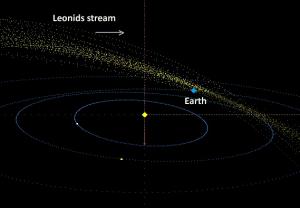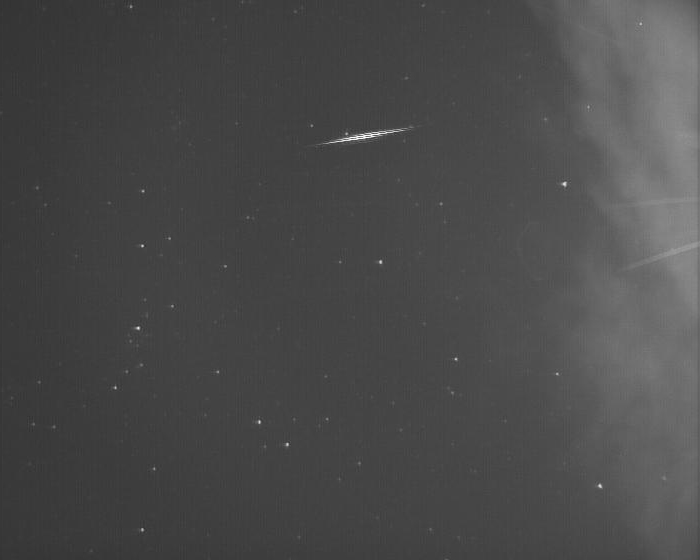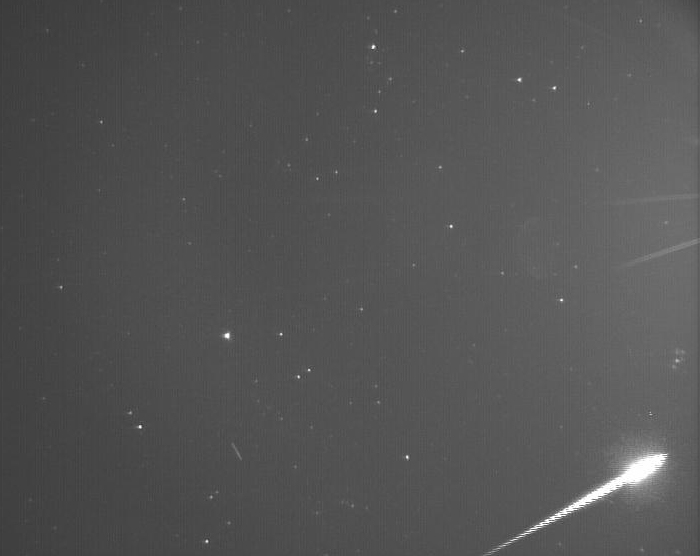2017 November 15
Observer’s Challenge – The Leonid meteor shower


The parent body of the Leonid meteors is comet 55P / Tempel-Tuttle with a period of 33.2 years. As it orbits the Sun the comet distributes streams of dust particles in its wake. If the Earth encounters one of these streams it produces a meteor shower when the cometary debris is vaporised in the upper atmosphere, explaining the intensity of Leonid meteor storms observed near the comet’s perihelion passage.
Leonid meteors (radiating from the constellation of Leo) can be seen throughout November, although most are visible between the 15th and 20th, with peak activity expected on the night of the 17th. We are a few years away from the return of their parent comet so they exhibit low rates, giving a ZHR (Zenithal Hourly Rate) of about 10 at maximum under clear dark skies. This is not expected to increase significantly until the late 2020s, although the Earth encounters varying streams of Leonid meteoroids, so there’s always a chance to see a nice meteor display.

Video networks are monitoring this year’s return of the Leonids and observers are encouraged to undertake visual watches, either individually or in groups. Conditions are very favourable with maximum occurring this weekend during New Moon. The radiant rises late in the evening, so watches after midnight will be the most productive.

A DSLR can also be used to record meteors. A series of 30s exposures with a fast f/ratio standard or wide-angle lens is recommended; the ISO setting will depend on local sky conditions.
However you observe the Leonids, please send your results to the BAA Meteor Section, meteor@britastro.org and display them on your BAA Member Page.
Alex has been a BAA member for many years. His main interest is video astronomy, applying video techniques to record transitory phenomena such as asteroidal and lunar occultations, meteor showers, and performing video astrometry of asteroids, Near Earth Objects and comets. He is co-founder of NEMETODE, a network of video meteor cameras in the British Isles.
| The British Astronomical Association supports amateur astronomers around the UK and the rest of the world. Find out more about the BAA or join us. |
